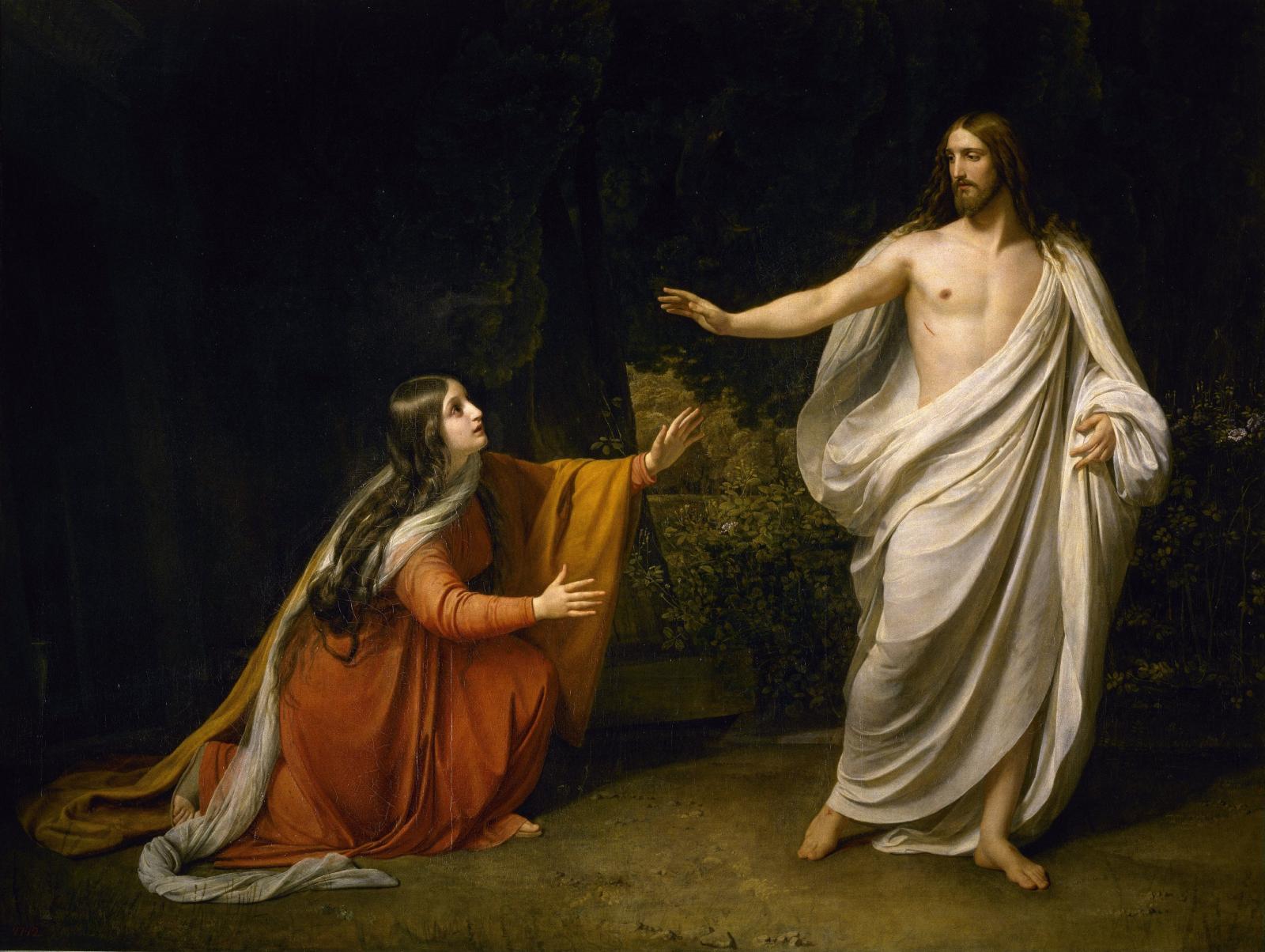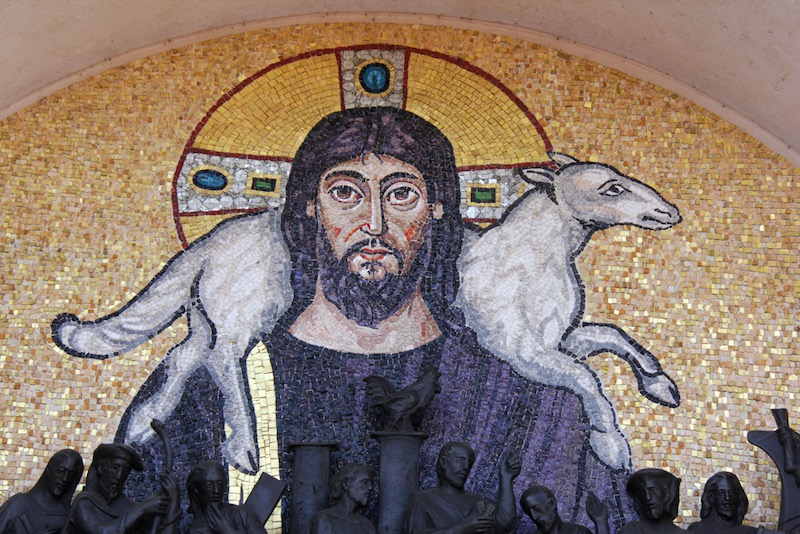In the world Jesus knew, both shepherds and sheep were ubiquitous in both the physical landscape and the landscape of the imagination, especially the Jewish imagination. All the ancestors of Israel – Abraham, Isaac, Jacob and their descendants – had been shepherds. Moses and David were called from tending their fathers’ flocks to tend the flock of God. God himself is spoken of as the Shepherd of Israel and, in time, the figure of the shepherd comes to be a stock image for Kingship, in Israel and beyond.
As for sheep, they were the chief providers of almost every necessity of life: meat, milk, clothing, writing materials and even tents. They were also essential to religious ritual, especially the practice of sacrifice. And sheep were kept a long time before becoming food. Tough mutton rather than tender lamb was a strict dietary necessity, not a whimsical preference.
But when Jesus speaks of himself as a shepherd, the good shepherd (the word translated as ‘good’ also means ‘beautiful’), he gives it an entirely new twist, on several different levels. By the time of Jesus, shepherds formed an under-class: along with sailors, camel drivers, and butchers, they were on the margins of respectable society, doing a necessary job, but despised, if not feared, for the kind of lifestyle and conditions their occupation entailed.
So, when Jesus identified himself as a shepherd, it was completely consistent with his habitual preference for and association with the outsider, the socially unacceptable, society’s rejects, inversely foreshadowed by the fact that it was rough-hewn shepherds who were the first to visit the infant Messiah. (Ronald Knox once remarked that the gospels depict Jesus as more often than not in the company of only two sorts of people: crooks and crocks.) 2
But there’s another twist to the way Jesus uses the shepherd-image of himself. As well as the decidedly non-U status of shepherding, Jesus was thinking of the extraordinarily close relationship between a shepherd and his sheep. We leave sheep to pasture on the hills alone; but in Jesus’ day and in his part of the world, shepherds lived with their flocks, sharing the same harsh conditions and exposed to the same physical dangers.
The closeness of the relationship was shown in yet another way. In modern Western sheep farming, there’s a close relationship between the shepherd and the sheepdog; it’s the sheepdog that knows and recognises the shepherd’s voice. But in Jesus’ day it was the sheep that responded to the shepherd’s voice. When he called, they followed.
So, for instance, leading them to new pasture (shepherds led their sheep then, as opposed to driving them, as happens today) the shepherd would call their names. The sheep would answer only to their own shepherd: he knew their names, they knew his voice.
And, in the evening, having deposited the sheep in the common pens outside the town gates, while they, the shepherds, went into (or, more likely, on) the town, each shepherd, when dawn came, would call his sheep out of the pen by name. “I know my own and my own know me”, would have resonated immediately with those who first heard Jesus say it.
But Jesus goes further and identifies himself as the good shepherd. The good (beautiful) shepherd, he says, is distinguished from all others by his willingness to die in order to protect his sheep. In this chapter alone of St John’s gospel, Jesus repeats no less than ten times: “A good shepherd lays down his life for his sheep.”
So, here and elsewhere in the New Testament, in other words, the image of Jesus as a shepherd is linked not to kingship and rule, but willingness to accept the ultimate proof of love: “greater love has no one that to lay down their life for their friend.”
Little wonder, then, that what’s thought to be the earliest known example of Christian art, still to be seen in the Catacomb of Callistus, the oldest of the tunnel-like burial grounds on the Via Appia Antica outside Rome, is Jesus depicted as a young shepherd, a just discernible mural, dating from the middle of the second century, in which Jesus is clearly carrying a sheep on his shoulders.
That earliest of images explains why various parts of this chapter in John’s gospel have been used on this Sunday in Eastertide, known as Good Shepherd Sunday, for the last 1500 years, since the time of Pope St Gregory the Great [pope 590-603] in the 6th century and possibly even as early as Pope St Leo the Great [pope 440-461] in 5th.
So, the point of Jesus calling himself the good shepherd is to illustrate the nature of his relationship with us: “We are his people, the sheep of his flock,” as the psalmist says. In particular, the image illustrates both the closeness and the permanence of that relationship, summed up in Jesus’ saying: “I know my sheep and my sheep know me.”
We often talk about our need to love and be loved. But that need is inextricably bound up with our equally deep need to be known and understood. All of us, whatever our state in life, need to share our sense of ourselves; we all have a profound need to be deeply understood by another human being, with regard to our anxieties and insecurities, obviously, but also with regard to what delights and uplifts us. 4
To know and be known, to understand and be understood this intimately takes unyielding patience, unsparing compassion, unselfish gentleness, as well as a robust readiness to challenge, when needed. It also takes trust that the one with whom we share ourselves so closely will never disparage or humiliate us, never use their knowledge to manipulate or damage us. Such qualities are non-negotiable for lasting love and friendship, even if the frailty of our human nature means that, taken all together, they’re rare gifts indeed, requiring a lifetime of perseverance and, above all, the help of divine grace.
It is precisely this kind of relationship into which we are invited by the Good Shepherd, whose love is personal and particular: in this sense, each of us is ‘the disciple whom Jesus loved.’ His love, of course, is God’s love; and so the image of the Good Shepherd nails all those negative images of a domineering, exacting God that have so often distorted faith and damaged lives.
Nothing could be further from the truth: God is a hopelessly doting father, not an unbending, judgmental schoolmaster, and each of us enjoys his whole and entire love and attention, simultaneously and perpetually. That is the heart of the Christian Gospel, which is not just Good News, but the best possible news.



 Loading ...
Loading ...
What do you think?
You can post as a subscriber user ...
User comments (0)